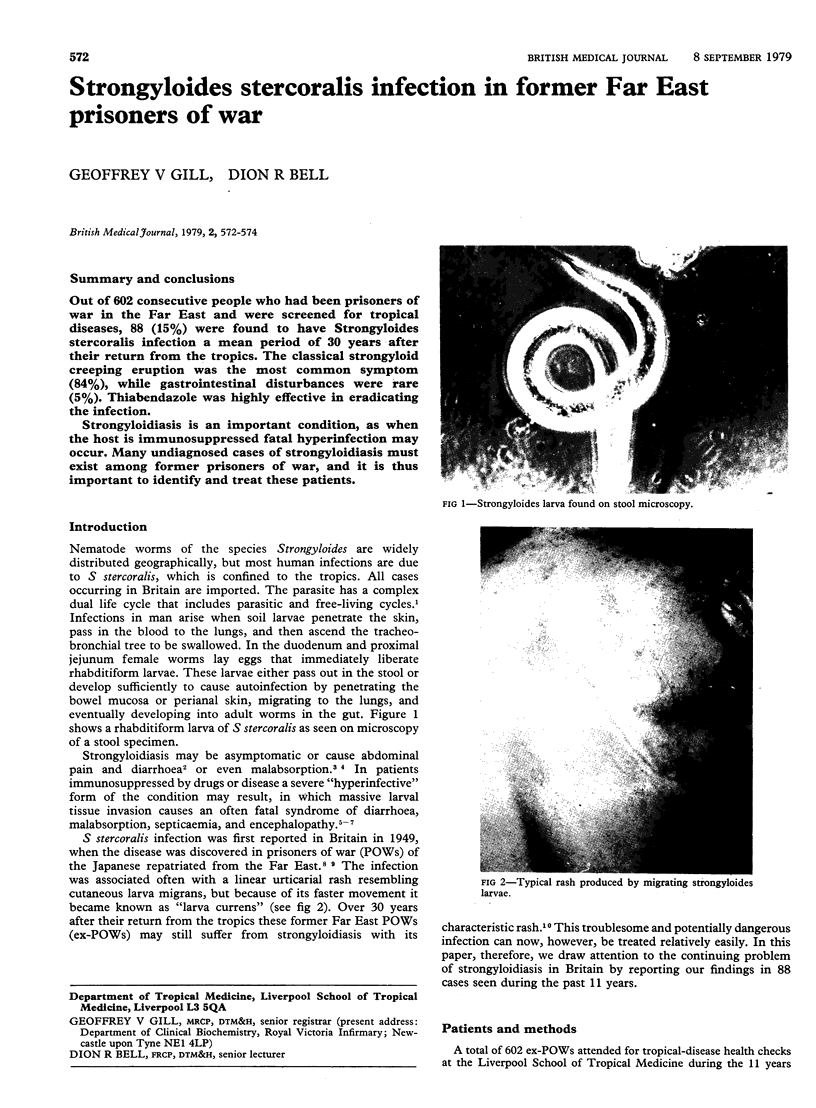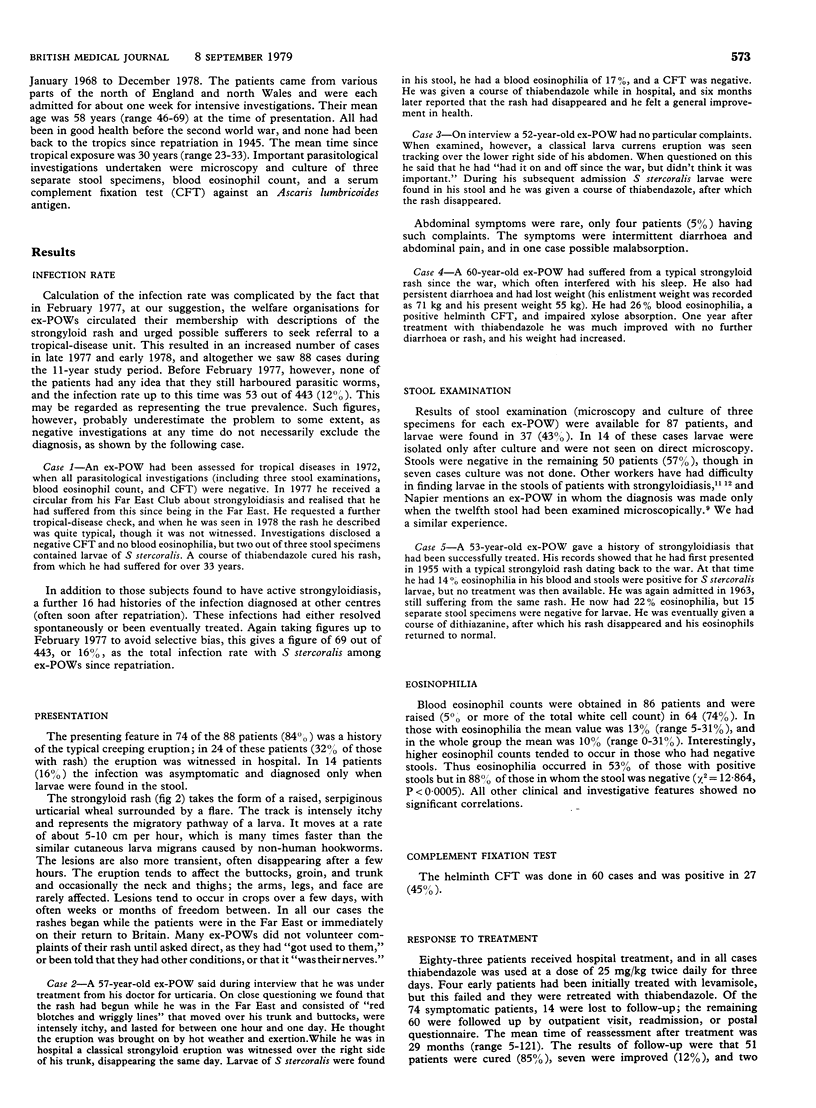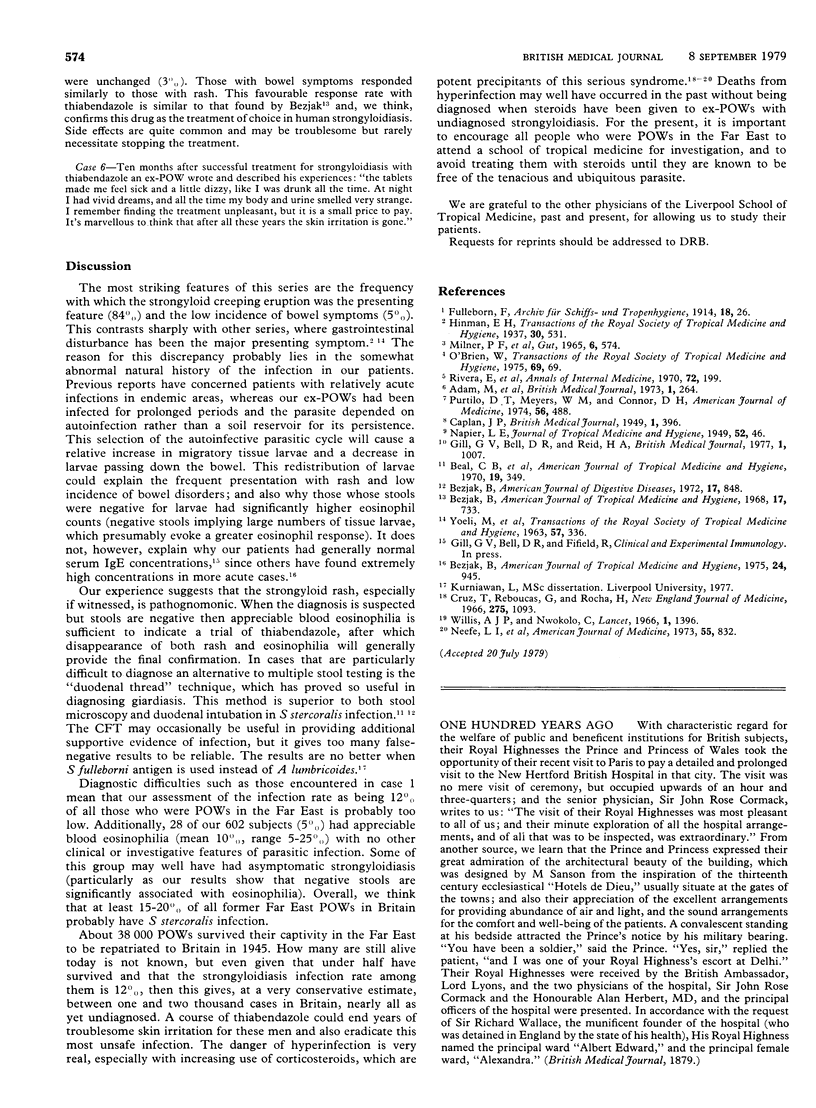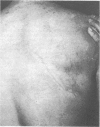Abstract
Out of 602 consecutive people who had been prisoners of war in the Far East and were screened for tropical diseases, 88 (15%) were found to have Strongyloides stercoralis infection a mean period of 30 years after their return from the tropics. The classical strongyloid creeping eruption was the most common symptom (84%), while gastrointestinal disturbances were rare (5%). Thiabendazole was highly effective in eradicating the infection. Strongyloidiasis is an important condition, as when the host is immunosuppressed fatal hyperinfection may occur. Many undiagnosed cases of strongyloidiasis must exist among former prisoners of war, and it is thus important to identify and treat these patients.
Full text
PDF


Images in this article
Selected References
These references are in PubMed. This may not be the complete list of references from this article.
- Beal C. B., Viens P., Grant R. G., Hughes J. M. A new technique for sampling duodenal contents: demonstration of upper small-bowel pathogens. Am J Trop Med Hyg. 1970 Mar;19(2):349–352. doi: 10.4269/ajtmh.1970.19.349. [DOI] [PubMed] [Google Scholar]
- Bezjak B. A clinical trial of thiabendazole in strongyloidiasis. Am J Trop Med Hyg. 1968 Sep;17(5):733–736. doi: 10.4269/ajtmh.1968.17.733. [DOI] [PubMed] [Google Scholar]
- Bezjak B. Evaluation of a new technic for sampling duodenal contents in parasitologic diagnosis. Am J Dig Dis. 1972 Sep;17(9):848–850. doi: 10.1007/BF02231159. [DOI] [PubMed] [Google Scholar]
- Bezjak B. Immunoglobulin studies in strongyloidiasis with special reference to raised serum IgE levels. Preliminary communication. Am J Trop Med Hyg. 1975 Nov;24(6 Pt 1):945–948. doi: 10.4269/ajtmh.1975.24.945. [DOI] [PubMed] [Google Scholar]
- Cruz T., Reboucas G., Rocha H. Fatal strongyloidiasis in patients receiving corticosteroids. N Engl J Med. 1966 Nov 17;275(20):1093–1096. doi: 10.1056/NEJM196611172752003. [DOI] [PubMed] [Google Scholar]
- Milner P. F., Irvine R. A., Barton C. J., Bras G., Richards R. Intestinal malabsorption in Strongyloides stercoralis infestation. Gut. 1965 Dec;6(6):574–581. doi: 10.1136/gut.6.6.574. [DOI] [PMC free article] [PubMed] [Google Scholar]
- Neefe L. I., Pinilla O., Garagusi V. F., Bauer H. Disseminated strongyloidiasis with cerebral involvement. A complication of corticosteroid therapy. Am J Med. 1973 Dec;55(6):832–838. doi: 10.1016/0002-9343(73)90265-9. [DOI] [PubMed] [Google Scholar]
- Purtilo D. T., Meyers W. M., Connor D. H. Fatal strongyloidiasis in immunosuppressed patients. Am J Med. 1974 Apr;56(4):488–493. doi: 10.1016/0002-9343(74)90481-1. [DOI] [PubMed] [Google Scholar]
- Rivera E., Maldonado N., Vélez-García E., Grillo A. J., Malaret G. Hyperinfection syndrome with Strongyloides stercoralis. Ann Intern Med. 1970 Feb;72(2):199–204. doi: 10.7326/0003-4819-72-2-199. [DOI] [PubMed] [Google Scholar]
- Willis A. J., Nwokolo C. Steroid therapy and strongyloidiasis. Lancet. 1966 Jun 25;1(7452):1396–1398. doi: 10.1016/s0140-6736(66)90303-5. [DOI] [PubMed] [Google Scholar]
- YOELI M., MOST H., BERMAN H. H., TESSE B. I. THE PROBLEM OF STRONGYLOIDIASIS AMONG THE MENTALLY RETARDED IN INSTITUTIONS. Trans R Soc Trop Med Hyg. 1963 Sep;57:336–345. doi: 10.1016/0035-9203(63)90096-8. [DOI] [PubMed] [Google Scholar]




